Trip Report: Maldives
Visited in January 2025
Maldives marked the end of a trip that started in Myanmar and Bhutan, my two last new countries in 2024. On the way home, I ticked off Maldives, my first country in 2025 and my final country on the Indian Subcontinent. Moreover, Maldives marked my 180th country in total.
My Air Asia flight from Bangkok, where I had a total of three transits on this trip, landed at Malé International Airport at 11.20 am on a Thursday. Funnily enough, despite its name, the airport is not located in the capital Malé, but on the neighboring island of Hulhulé.
Air Asia only allows 7 kg of hand luggage. So I had to hand in my 10kg trolley as checked baggage for around 70 dollars (what a rip-off) and wait for ages at the baggage carousel on arrival. It was a good reminder of why I stopped traveling with checked baggage many years ago.
I saw another rip-off just a few minutes later. When I wanted to buy a SIM card, I learned that the cheapest package for tourists is 20 GB for no less than 40 dollars. You can also get 100 GB for 50 USD. It’s obvious that no tourist needs anywhere near that much data. I saw in an old brochure that 4 GB used to be offered. However, this option was then removed, so you have to buy at least 20 GB. By the way, the eSIM is just as expensive. Obviously, I did not buy it. First world problems, but it pissed me off anyway.
The next thing I saw was miserable weather. It was cloudy and it rained. I was prepared for this as the weather forecast said it would rain during my entire stay. I can’t think of a country where rain can ruin the whole experience more than in Maldives. But that was the outlook for the next few days.
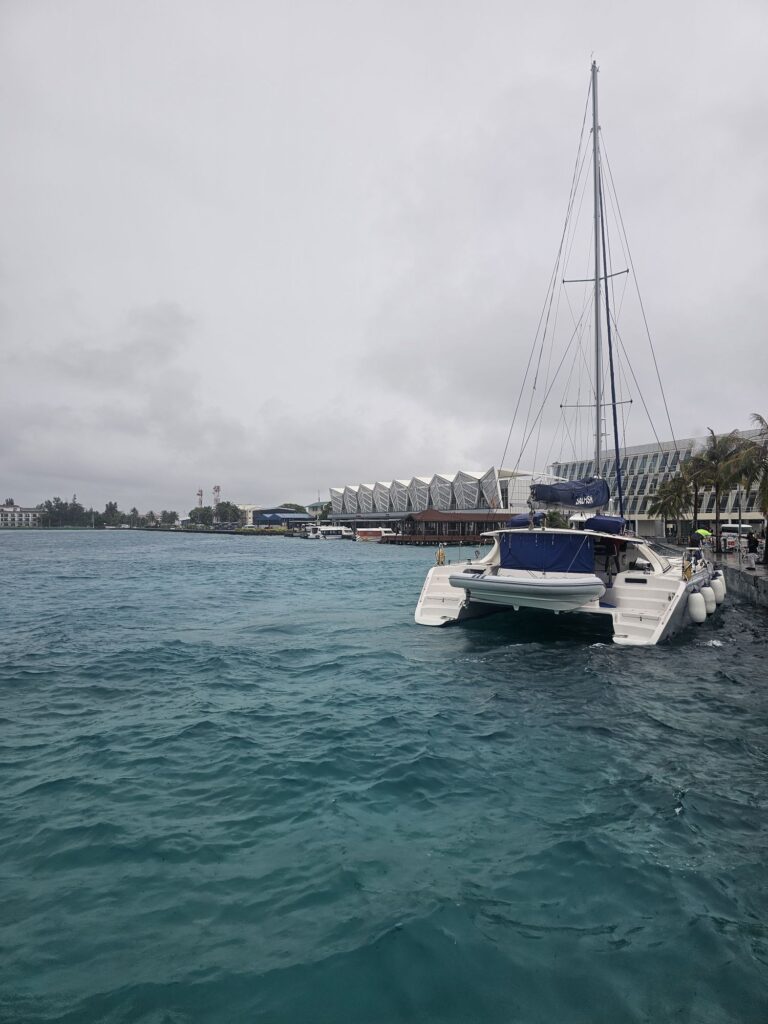
From the airport, a $20 speedboat took me to Maafushi, an island about half an hour from Malé. Maldives consists of nearly 1,200 islands, of which about 200 are inhabited. Some of the inhabited islands are pure resort islands, i.e. the whole island is basically one resort without any houses where locals live. Others are local islands and some of them also have accommodation for tourists.
Until 2009, only resort tourism was allowed in Maldives. The government had strict regulations that prohibited tourists from staying on local islands. Tourists could visit local islands as part of organized excursions. However, this was highly regulated and only possible in certain contexts. This model strictly separated tourism from the daily lives of the locals.
When this rule changed in 2009, Maafushi became the country’s first island to build a hotel for tourists. Since then, the island has become one of the most popular for tourists who are not interested in resort vacation. The opening of the local islands to tourists has also made it possible for travelers to vacation in Maldives at a relatively low cost, as these islands are generally much cheaper than the resort islands.
My visit to Maldives was going to last three days, actually two and a half. Why so short? Because I was going alone and didn’t want to spend a week on the beach by myself. My girlfriend was still suffering from the Madagascar trip and didn’t want to join me. So my plan was this. I wanted to explore Maafushi a little on the first afternoon, do a shark dive on the second day, and a day trip to a resort on the third day so I could experience that world as well.
The first afternoon went as planned. I checked into my hotel and walked around the island a few times. Maafushi is so small that it takes about 15 minutes to get from one end to the other. Since it rained every now and then in between, it wasn’t as if I could have done an insane amount of walking.
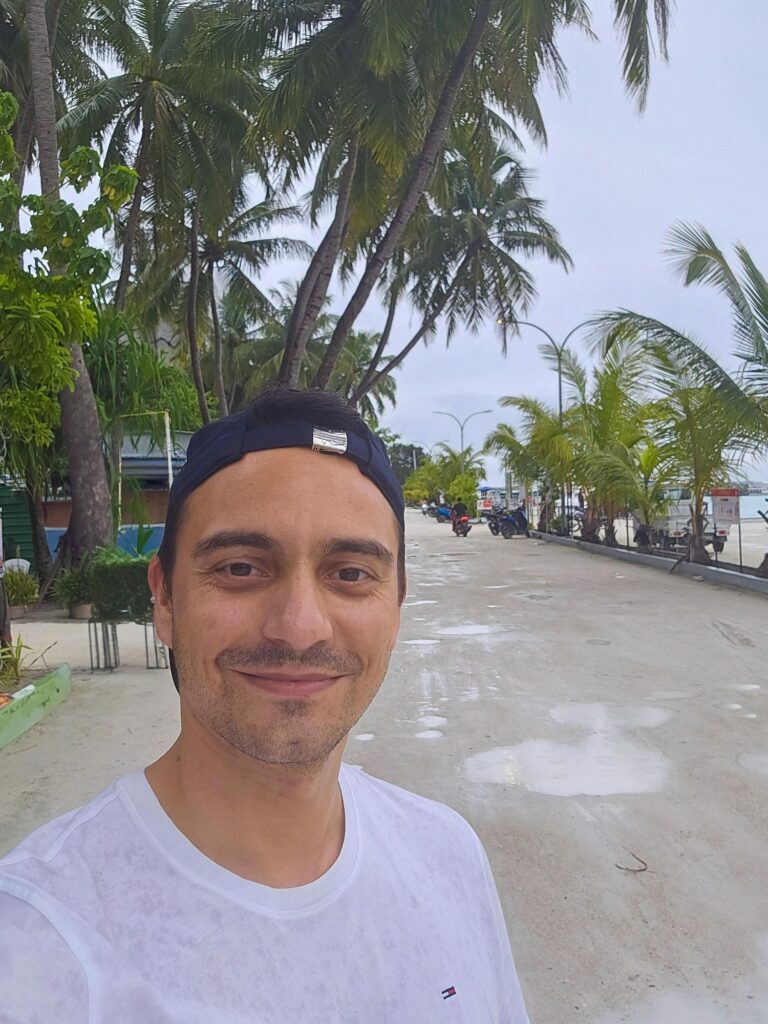
There are “no bikini” signs in many places on the island. Maldives is a Muslim country and a very strict one. On the local islands, bikinis are taboo in public places. Men are also not allowed to walk around topless. However, on some of the local islands, including Maafushi, there are so-called bikini beaches for tourists. These are covered with a screen so that no one can see in from outside.
Maldives is also a country where the human rights situation is problematic. There are no women’s rights, and homosexuality and renouncing Islam are punishable by law. Despite some attempts at reform after 2018, progress remains uneven and international organizations continue to criticize the situation.
Funnily enough, most tourists don’t seem to be bothered because of this, while they like to point fingers at countries like Qatar or Saudi Arabia. This is probably due to the fact that many people don’t know what’s going on in Maldives, or they simply don’t care. After all, Maldives stands for tropical dream beaches, so you don’t want to hear such negativity.
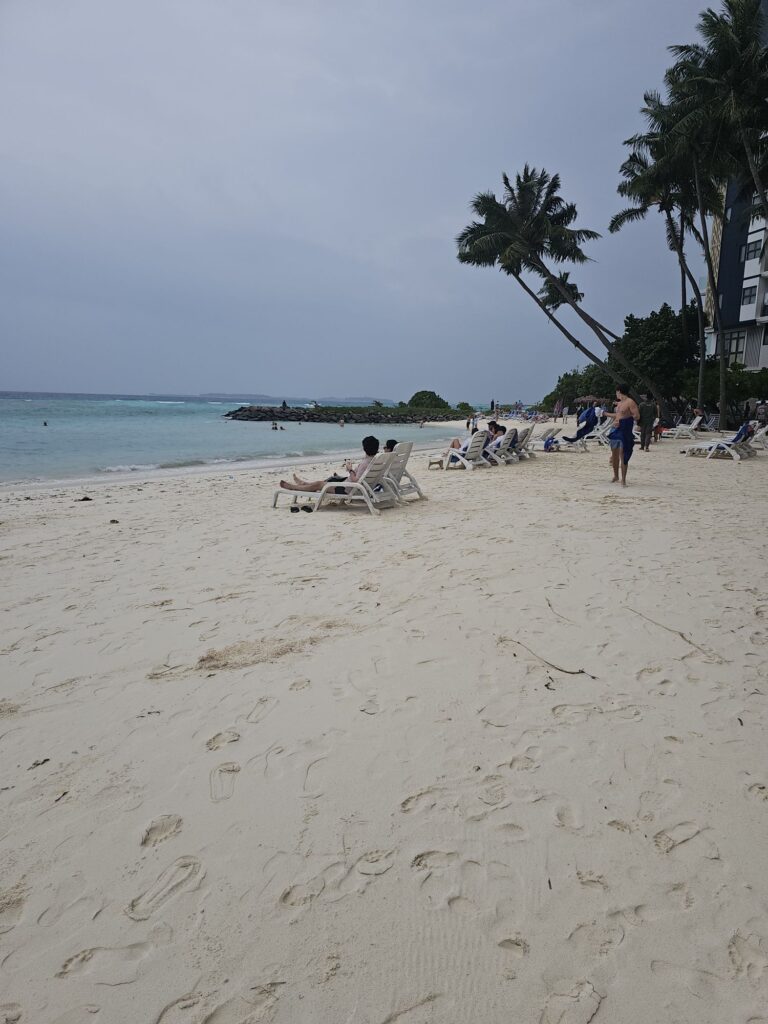
In general, I thought Maafushi had a cool vibe. On booking.com I counted four 4-star hotels and not a single 5-star. The accommodation here is mostly guest houses and the people on the island are backpackers, most of them from EU countries or Russia. There are also plenty of restaurants, some of them with incredible food.
I would almost have said that Maafushi is a kind of Gili Trawangan in the Indian Ocean. However, there is no alcohol here. At least almost none, as alcohol is not legal on the local islands. However, there is a loophole to get around this on Maafushi: a floating bar operates in the sea. Apparently, this alcohol ban only applies to the land mass, but not to the ocean. However, I have never been to this bar and I heard that drinks are quite expensive.
Due to the weather forecast, I decided against booking a shark diving tour. Sitting on a boat for a day in the rain didn’t sound particularly great. The decision turned out to be a very good one, because the next day it rained continuously from morning to evening.
The first day was already not good. It didn’t rain non-stop, but the sun didn’t shine once either. Heavy cloud cover and no rain was still the best condition on that first afternoon. The second day, on the other hand, was a complete disaster.
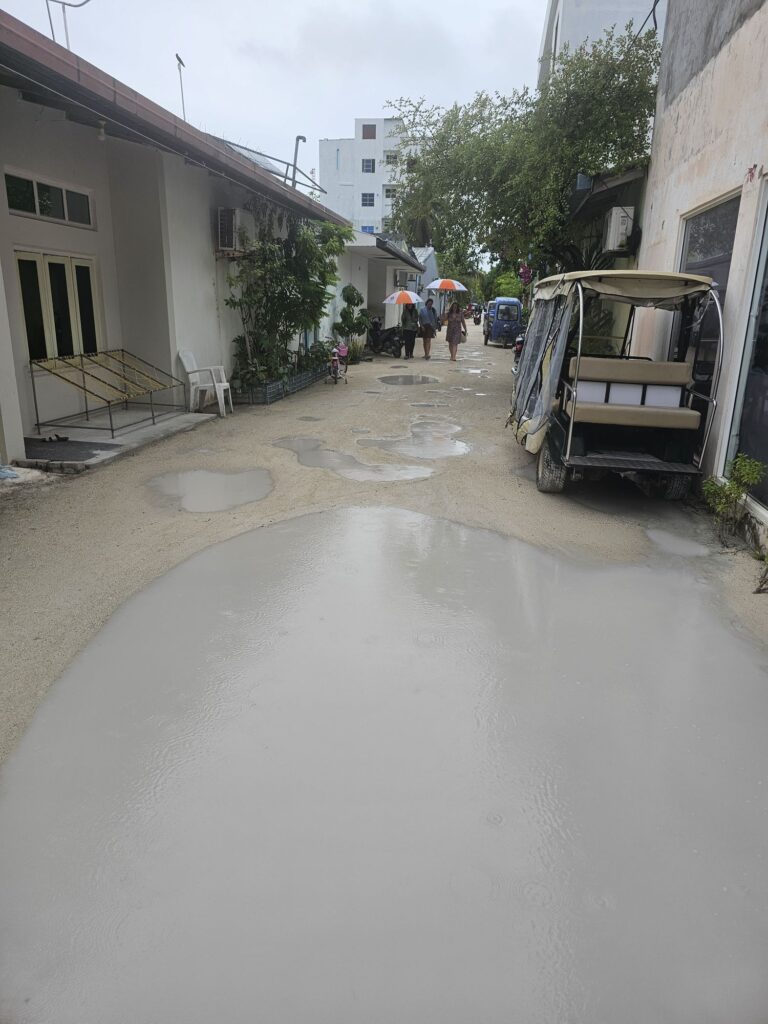
I took the situation with humor. Seychelles? Rain. Mauritius? Also a bit rain. Maldives? By far the worst. In this situation I was glad that my girlfriend wasn’t there. It would have been another disappointment after Seychelles and Mauritius. Funnily enough, I tried to convince her to come along when I booked. My argument was that January is statistically the month with the least rainy days…
So what was I doing on that rainy day? I did nothing. Really nothing. I sat under the garden roof of my hotel and kept myself busy with my cell phone. I went to a restaurant once in a while, but there wasn’t much else to do. It was probably the most uneventful day I’ve ever had on a trip.
By the way, the weather forecast said the next sunny day was nine days away. According to the owner of my hotel, it had been like that the days before. In his opinion, the war in Ukraine was to blame for the fact that it rained so often, as the weapons of war polluted the sky. I felt sorry for the people who had been here longer. Especially those who spent thousands of dollars, euros or whatever on a resort. During the dry season of the country.
The next day I wanted to visit a resort island to see this side of tourism in Maldives. But with this weather I didn’t feel like paying 150 USD for a resort trip. It would have been a waste of money.
Instead, I took the boat back to the capital Malé in the morning, where I had to spend the last night anyway. Malé was flooded from the rains of the last few days. Huge puddles stretched across the streets and sometimes the sidewalk.
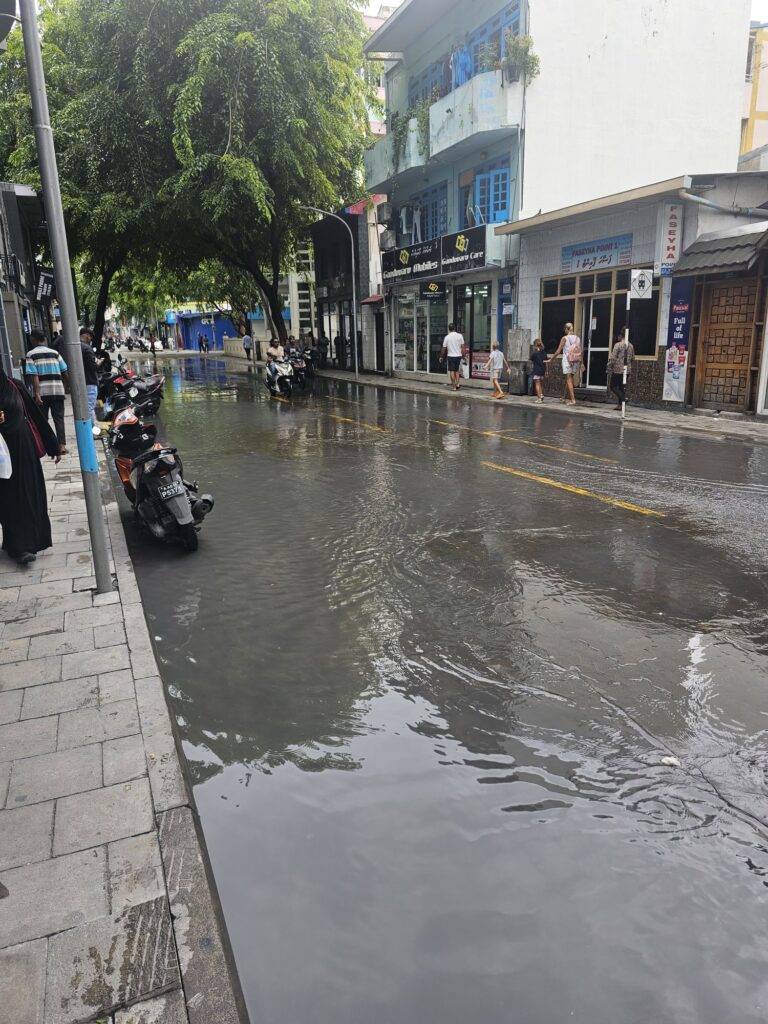
Luckily, it didn’t rain again that day, which definitely helped me with my exploring on foot. Although exploring might be a bit of an exaggeration. Malé is also a small city. It takes just over 30 minutes to get from one end of the island to the other.
However, Malé is one of the most densely populated cities I have ever been to. 260,000 people live here, that’s over 17,000 per square meter. The city is also full of cars and motorbikes, the streets are narrow and as a pedestrian you have to be careful to get around on the sometimes non-existent sidewalks.
Malé doesn’t really have much to offer. There are a handful of places of interest. These include one or two mosques, a tsunami memorial, the Victory Monument and 2-3 other things. I didn’t find any of them really exciting.
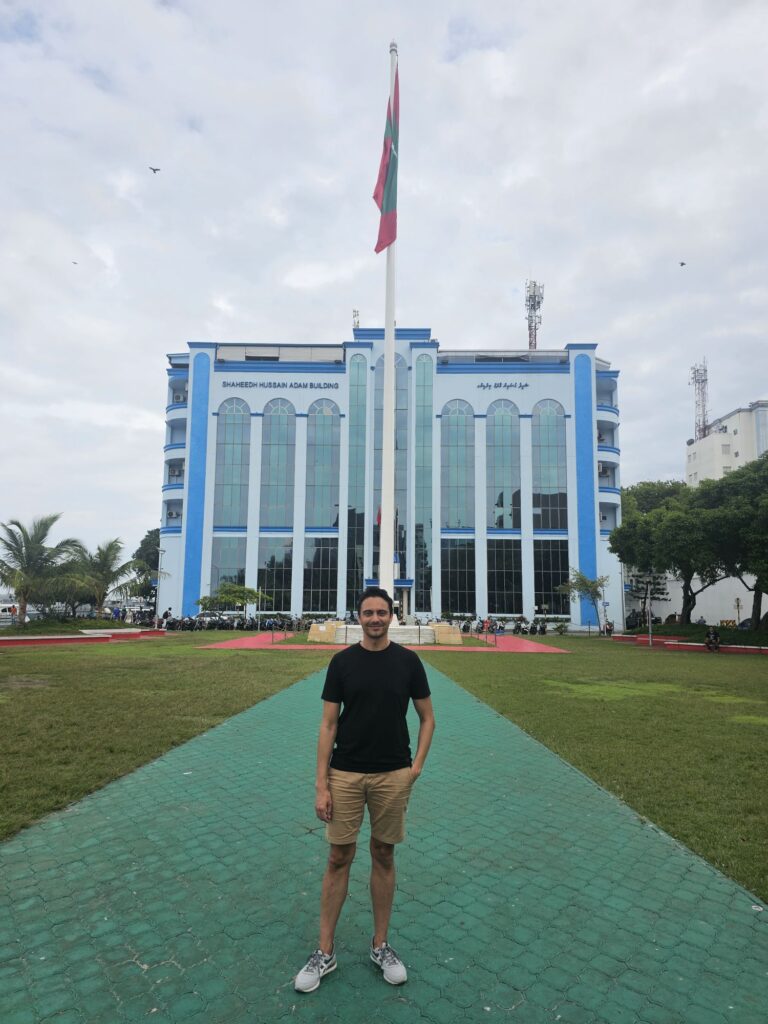
However, I did see some tourists here. Many probably spend the first or last day of their trip here. And admittedly, even if Malé doesn’t have that much to offer, the city is still more exciting than Victoria or Port Louis, for example. Nevertheless, Malé is not a must.
The next morning I left Maldives. My flight was three hours late. The reason was freezing rain in Switzerland, which delayed the flight to Malé. Somehow it suited this trip.
I’ll keep the summary short. Maldives really sucked and I’ve rarely had such an uneventful trip. Together with Tuvalu, Maldives is probably one of the most boring trips I’ve ever had. But hey, it is what it is. In the end, I had already been traveling for two weeks at this point and didn’t mind doing “nothing” for three days.
The Indian Ocean and I probably won’t become friends anymore after Seychelles, Mauritius and Maldives. Well, Comoros is still there, it actually did not rained there, but I still don’t want to go back. That leaves Reunion or Mayotte, although I’m not really in the mood for that either.
So country no. 180 will probably not be remembered for long. On the other hand, country no. 181 was more action-packed again…
Click here to find the trip reports of the 180+ other countries I have visited so far!
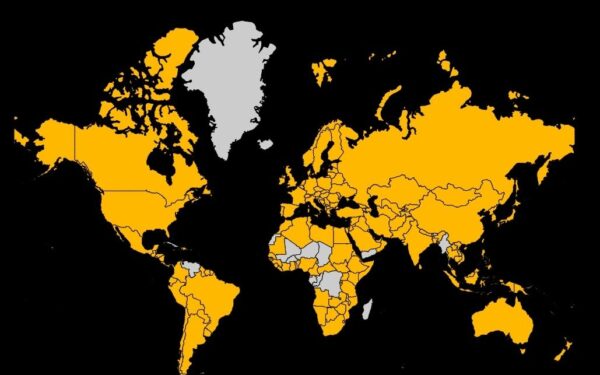
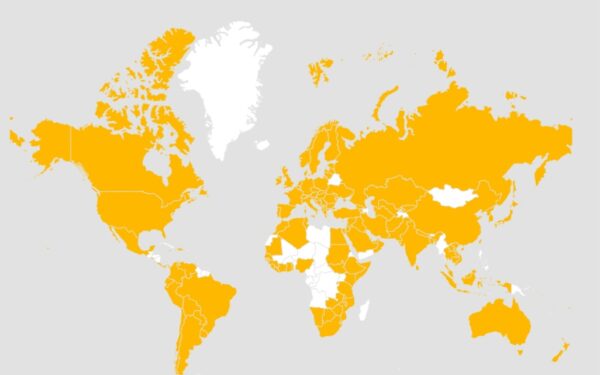
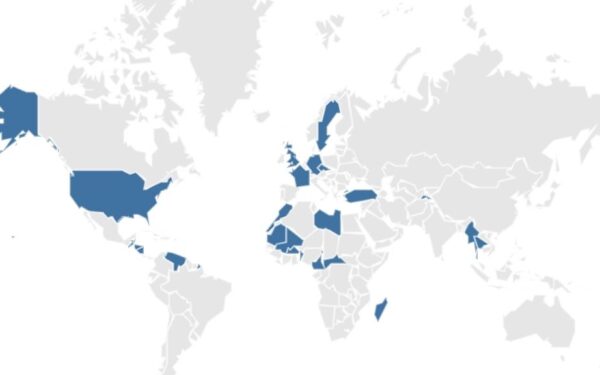
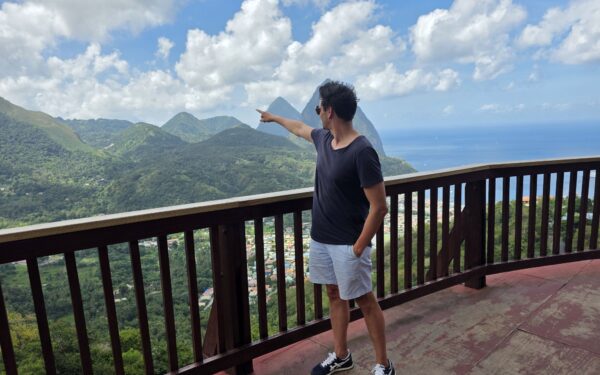
“260,000 people live here, that’s over 17,000 per square meter. ” – Wow, that is crowded!